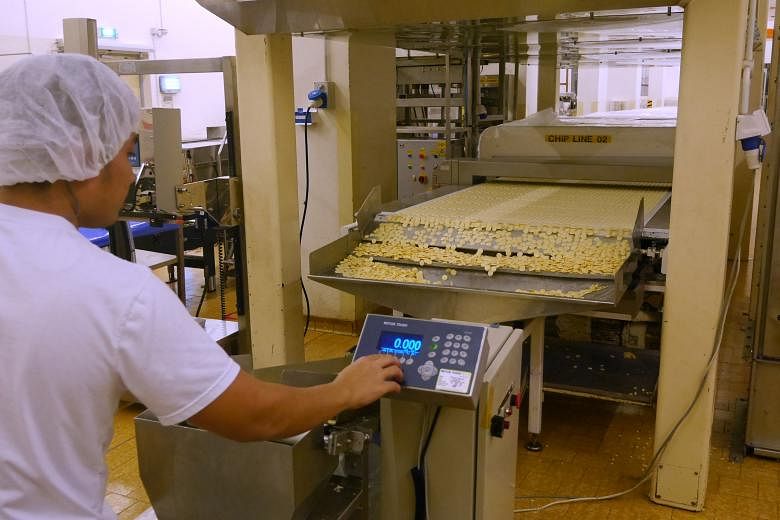Enticing health-conscious with premium products
Chocolate is just about everyone's secret sinful pleasure, but Tuas is perhaps the last place you would think of as Choc Central.
It might come as a surprise to some that American snack company Mondelez and Swiss bulk chocolate maker Barry Callebaut have factories here.Mondelez brands include Cadbury and Toblerone, while Barry Callebaut supplies manufacturers such as Unilever.
At first glance, Singapore might seem to be an unlikely site for a confectionery hub - but even so, all of these companies have been scaling up their operations here.
They cite Singapore's strict food hygiene standards that inspire customer trust, its reliable infrastructure and talent pool, and its easy access to regional markets, which are expanding fast, thanks to a rising middle class.
Aalst Chocolate, which was founded here and now has 150 employees, said it was challenging at first to convince customers that chocolate made here was as good as that from Europe.
"Chocolate has traditionally been seen as a European speciality, so selling chocolates produced in Singapore is naturally challenging from a branding perspective," says the company's chief operating officer, Ms Connie Kwan.
To overcome this, Aalst used high-quality ingredients and leveraged on Singapore's reputation for exacting hygiene standards.
"Customers unfamiliar with our brand are able to quickly trust us when they learn that our production facility is based in Singapore," Ms Kwan says.
Singapore's free trade agreements have also given the company a "price advantage", while allowing it to "quickly establish penetration in some of the biggest markets", she notes.
Aalst exports to around 40 countries and, over the past few years, it has increased production by an average of 20 per cent a year.
In 2014, it produced 11,000 tonnes of chocolate and earlier last year, it expanded its annual production capacity from 13,500 tonnes to 30,000 tonnes.
Mondelez - which came up with its eclair offering, Cadbury Choclairs, here - has a research and development (R&D) centre in Jurong that develops chocolate and gum products.
The eclairs were so successful that the company started selling them in other markets such as India, China and Mexico after 2008.
One challenge that it has to tackle is probably unique to Singapore - the country's tough laws on chewing gum "make it difficult to find taste testers and developers with personal experience".
Barry Callebaut, whose chocolate production capacity here has been raised by 50 per cent over the past five years, said Singapore's stringent hygiene standards have helped reinforce the firm's reputation for producing high-quality products.
Also, it was able to hire skilled professionals here who could "guide our factories across the region in process streamlining and workflow redesign".
The firm's factory in Senoko South Road near Woodlands has an annual production capacity of more than 28,000 tonnes - which makes it one of Barry Callebaut's biggest factories in the Asia-Pacific.
The company has around 200 employees here.
The factory produces mainly for customers in overseas markets.
Asia's growing middle class is helping to power the chocolate market, says Ms Nicola Gilchrist, director of corporate and government affairs at Mondelez Asia Pacific.
"A growing number of aspirant consumers with more money to spend are looking for premium products," she notes.
Mondelez has catered to this segment by introducing Cadbury Glow, a luxury chocolate brand that it started selling in 2014.
Aalst is looking at expanding into higher-value-added products such as chocolate confectionery.
Also, more and more consumers in Asia are weighing health and nutrition issues and changing their product choices. As a result, at Mondelez, 70 per cent of its global R&D efforts are now focused on areas such as making products healthier, Ms Gilchrist adds.
Urbanisation and longer working hours are prompting Asians to buy chocolates online as well, which has spurred Mondelez to station a new director of e-commerce here.


